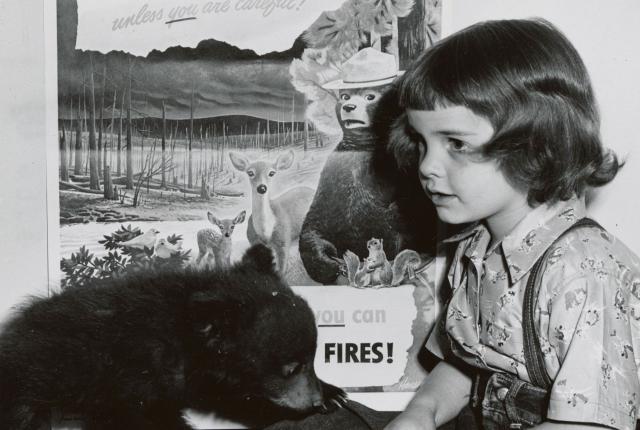Above: After her father, New Mexico Game and Fish Warden Ray Bell, flew a wounded and orphaned cub from a forest fire near Capitán, Judy Bell helped him recover in her family’s Santa Fe home. Given his claws, the bear wasn’t the best of house pets and, upon adopting the moniker of Smokey Bear, moved to the National Zoo, in Washington, D.C. Photo courtesy of the National Archives.
Created 75 years ago as a cartoon mascot who warned, “Only you can prevent forest fires,” Smokey Bear found his living embodiment six years later—a fire-singed cub clinging to a charred tree in the Lincoln National Forest. After his 1950 rescue and rehabilitation, the little oso negro moved to a National Zoo exhibit, where he launched a cottage industry in Smokey tchotchkes but remained, his handlers said, decidedly wild and irascible. He died in 1976 and was buried in Capitán at Smokey Bear Historical Park. Its museum celebrates him but also explores the post-Smokey evolution of forest management. Over the years, Smokey’s legacy has suffered a few hits, but this truth stands: Firefighters confront mounting perils in our forests. The park’s nature walk underscores that with a new sculpture dedicated to fallen heroes. It includes the names of 31 New Mexicans who died fighting wildfires between 1946 and 2017, each one worthy of somber reflection. “Different groups of firefighters have come in,” says Bennie Long, the park superintendent, “and it almost always brings them to tears.”

GETTING THERE
US 380 runs past Smokey Bear Historical Park, in Capitán, which sits 85 miles east of San Antonio (off I-25) and 70 miles west of Roswell (off US 285).


